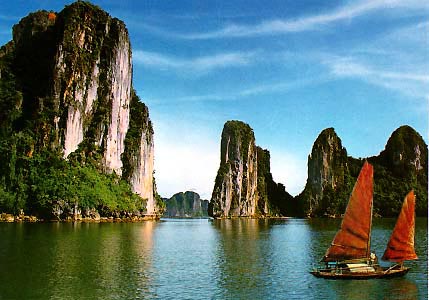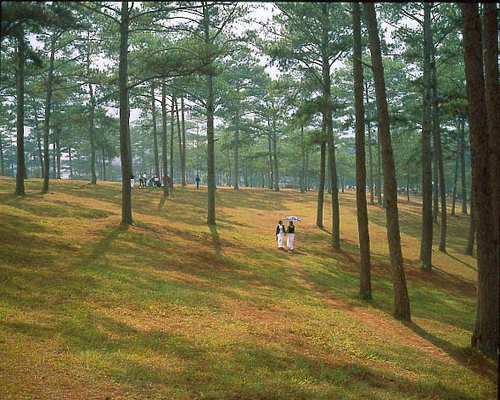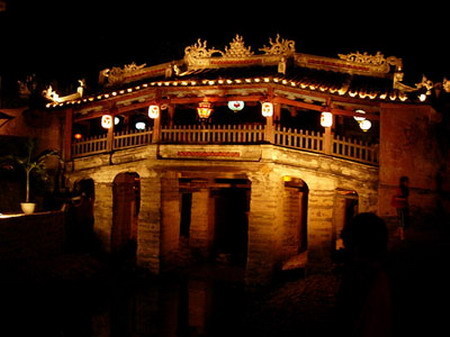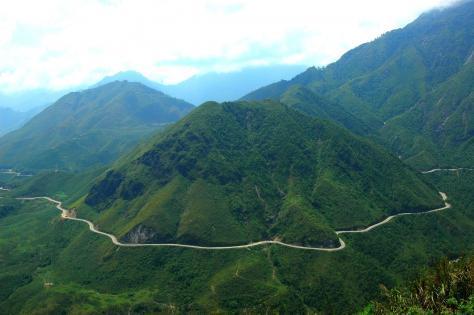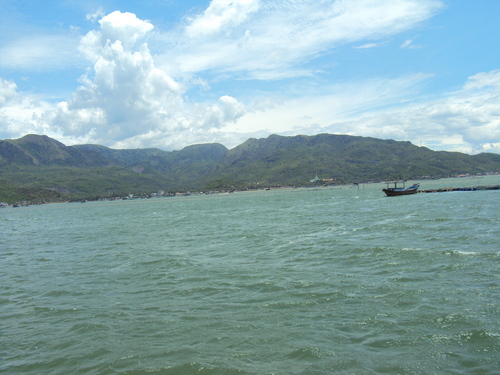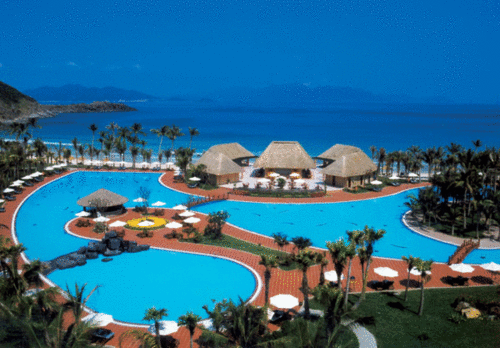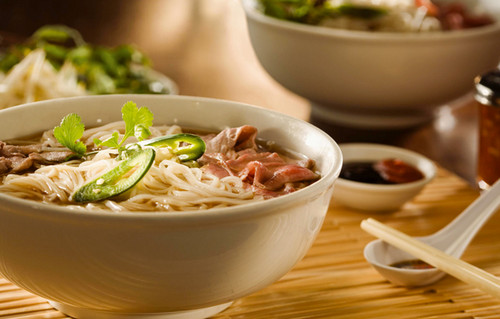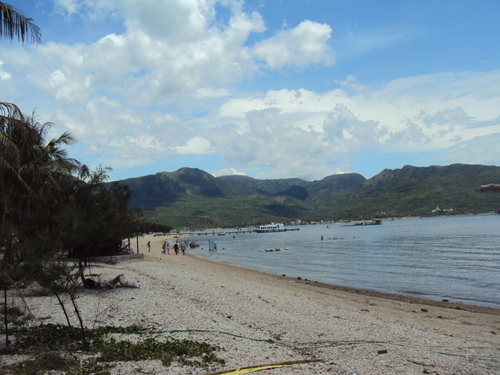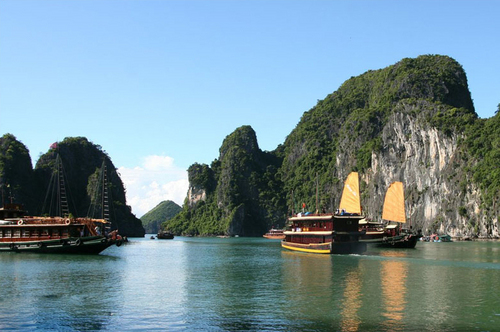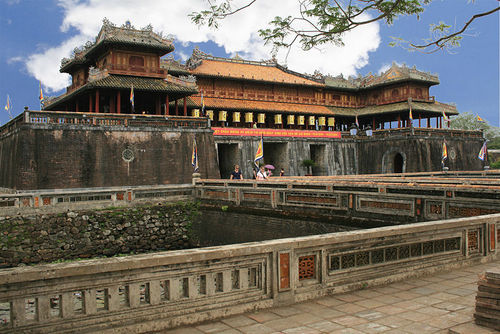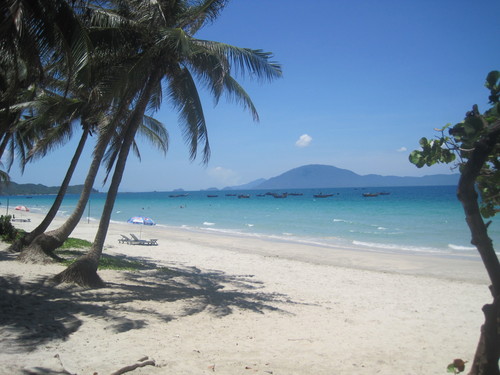Historically, Vietnam has been an agricultural civilization based on wet rice cultivating. The Vietnam War destroyed much of the country's economy. Upon taking power, the Government created a planned economy for the nation.
Collectivization of farms, factories and economic capital was implemented, and millions of people were put to work in government programs. For a decade, united Vietnam's economy was plagued with inefficiency and corruption in state programs, poor quality and underproduction and restrictions on economic activities and trade. It also suffered from the trade embargo from the United States and most of Europe after the Vietnam War. Subsequently, the trade partners of the Communist blocs began to erode.
In 1986, the Sixth Party Congress introduced significant economic reforms with free market economy elements as part of a broad economic reform package called "đổi mới" (Renovation), resulting in a Socialist-oriented market economy. Private ownership was encouraged in industries, commerce and agriculture.[55]
Vietnam achieved around 8% annual GDP growth from 1990 to 1997 and continued at around 7% from 2000 to 2005, making it one of the world's fastest growing economies. Growth by 8.5 percent, 6.3, 5.3 and 6.8 for the year of 2007, 2008, 2009 and 2010 respectively, but inflation rate hit 11.8 percent in December 2010 on a year-on-year basis, according to a GSO estimate. The dong has been devalued three times since late last year.[56] Before 1998, foreign investment grew threefold and domestic savings quintupled.[citation needed] Manufacturing, information technology and high-tech industries form a large and fast-growing part of the national economy. Vietnam is a relative newcomer to the oil business, but today it is the third-largest oil producer in Southeast Asia with output of 400,000 barrels per day (64,000 m3/d). Vietnam is one of Asia's most open economies: two-way trade is around 160% of GDP, more than twice the ratio for China and over four times India's.[57]
Deep poverty, defined as a percent of the population living under $1 per day, has declined significantly and is now smaller than that of China, India, and the Philippines.[58] Much can be attributed to equitable economic policy that aimed at improving living standards and preventing the rise of inequality; this included egalitarian land distribution at the initial stages of Doi Moi, investing in poor remote areas and the supporting the poor with education and health fees.[59]
In 2009, the nominal GDP reached $92.439 billion,[3] with nominal GDP per capita of $1,060[3] According to a forecast in December 2005 by Goldman-Sachs, Vietnamese economy will become the 17th largest economy in the world in 2025, with nominal GDP of $ 436 billion and GDP per capita of 4,357 USD.[60] According to the forecast by the PricewaterhouseCoopers in 2008, Vietnam may be fastest growing of emerging economies by 2025 with a potential growth rate of almost 10% per annum in real dollar terms that could push it up to around 70% of the size of the UK economy by 2050.[61]
As a result of several land reform measures, Vietnam is now the largest producer of cashew nuts with a one-third global share, the largest producer of black pepper accounting for one-third of the world's market and second largest rice exporter in the world after Thailand. Vietnam has the highest percent of land use for permanent crops, 6.93%, of any nation in the Greater Mekong Subregion. Besides rice, key exports are coffee, tea, rubber, and fishery products. However, agriculture's share of economic output has declined, falling as a share of GDP from 42% in 1989 to 20% in 2006, as production in other sectors of the economy has risen. According to the CIA World Fact Book, the unemployment rate in Vietnam is 2.9% (30 April 2009 est.)[62]
Vietnam applied sequenced trade liberalisation, a two-track approach opening some sectors of the economy to international markets while protecting others.[59][63] Among other steps taken in the process of transitioning to a market economy, Vietnam in July 2006 updated its intellectual property legislation to comply with TRIPS. Vietnam was accepted into the WTO on November 7, 2006. Vietnam's chief trading partners include China, Japan, Australia, ASEAN countries, the U.S. and Western European countries. Vietnam still uses five-year plans however (see Five-Year Plans of Vietnam).
Collectivization of farms, factories and economic capital was implemented, and millions of people were put to work in government programs. For a decade, united Vietnam's economy was plagued with inefficiency and corruption in state programs, poor quality and underproduction and restrictions on economic activities and trade. It also suffered from the trade embargo from the United States and most of Europe after the Vietnam War. Subsequently, the trade partners of the Communist blocs began to erode.
In 1986, the Sixth Party Congress introduced significant economic reforms with free market economy elements as part of a broad economic reform package called "đổi mới" (Renovation), resulting in a Socialist-oriented market economy. Private ownership was encouraged in industries, commerce and agriculture.[55]
Vietnam achieved around 8% annual GDP growth from 1990 to 1997 and continued at around 7% from 2000 to 2005, making it one of the world's fastest growing economies. Growth by 8.5 percent, 6.3, 5.3 and 6.8 for the year of 2007, 2008, 2009 and 2010 respectively, but inflation rate hit 11.8 percent in December 2010 on a year-on-year basis, according to a GSO estimate. The dong has been devalued three times since late last year.[56] Before 1998, foreign investment grew threefold and domestic savings quintupled.[citation needed] Manufacturing, information technology and high-tech industries form a large and fast-growing part of the national economy. Vietnam is a relative newcomer to the oil business, but today it is the third-largest oil producer in Southeast Asia with output of 400,000 barrels per day (64,000 m3/d). Vietnam is one of Asia's most open economies: two-way trade is around 160% of GDP, more than twice the ratio for China and over four times India's.[57]
Deep poverty, defined as a percent of the population living under $1 per day, has declined significantly and is now smaller than that of China, India, and the Philippines.[58] Much can be attributed to equitable economic policy that aimed at improving living standards and preventing the rise of inequality; this included egalitarian land distribution at the initial stages of Doi Moi, investing in poor remote areas and the supporting the poor with education and health fees.[59]
In 2009, the nominal GDP reached $92.439 billion,[3] with nominal GDP per capita of $1,060[3] According to a forecast in December 2005 by Goldman-Sachs, Vietnamese economy will become the 17th largest economy in the world in 2025, with nominal GDP of $ 436 billion and GDP per capita of 4,357 USD.[60] According to the forecast by the PricewaterhouseCoopers in 2008, Vietnam may be fastest growing of emerging economies by 2025 with a potential growth rate of almost 10% per annum in real dollar terms that could push it up to around 70% of the size of the UK economy by 2050.[61]
As a result of several land reform measures, Vietnam is now the largest producer of cashew nuts with a one-third global share, the largest producer of black pepper accounting for one-third of the world's market and second largest rice exporter in the world after Thailand. Vietnam has the highest percent of land use for permanent crops, 6.93%, of any nation in the Greater Mekong Subregion. Besides rice, key exports are coffee, tea, rubber, and fishery products. However, agriculture's share of economic output has declined, falling as a share of GDP from 42% in 1989 to 20% in 2006, as production in other sectors of the economy has risen. According to the CIA World Fact Book, the unemployment rate in Vietnam is 2.9% (30 April 2009 est.)[62]
Vietnam applied sequenced trade liberalisation, a two-track approach opening some sectors of the economy to international markets while protecting others.[59][63] Among other steps taken in the process of transitioning to a market economy, Vietnam in July 2006 updated its intellectual property legislation to comply with TRIPS. Vietnam was accepted into the WTO on November 7, 2006. Vietnam's chief trading partners include China, Japan, Australia, ASEAN countries, the U.S. and Western European countries. Vietnam still uses five-year plans however (see Five-Year Plans of Vietnam).


